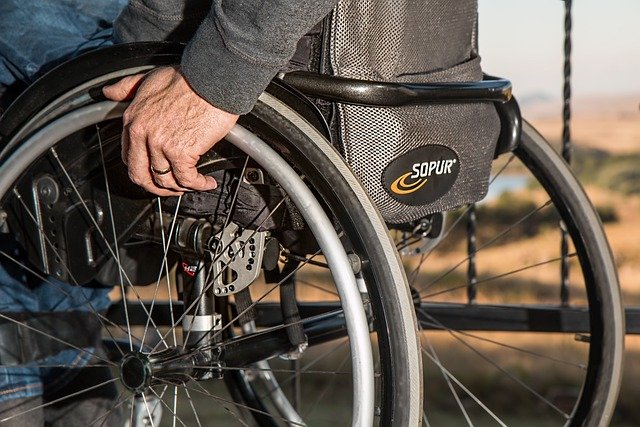Wheelchairs for Sale: A Practical Guide to Choosing, Buying, and Caring for the Right Fit
Finding the right wheelchair involves more than just picking a model from a catalog. Whether you need temporary mobility support or a long-term solution, understanding the different types, sizing requirements, and key features can make all the difference in comfort, independence, and quality of life. This comprehensive guide walks you through everything from manual and power options to financing considerations and proper maintenance.

Selecting a wheelchair is a significant decision that impacts daily comfort, mobility, and independence. With various models, features, and price points available, understanding your specific needs and the options available helps ensure you make an informed choice that serves you well for years to come.
Types of Wheelchairs: Manual, Transport, Power, and Lightweight Options
Wheelchairs come in several distinct categories, each designed for different mobility needs and lifestyles. Manual wheelchairs are self-propelled and offer the most affordable entry point, typically weighing between 25-40 pounds. These chairs provide good upper body exercise and work well for users with sufficient arm strength and endurance.
Transport wheelchairs feature smaller wheels and are designed to be pushed by a caregiver rather than self-propelled. They’re lighter and more compact, making them ideal for occasional use or travel situations. Power wheelchairs use battery-operated motors and are suitable for users who lack the strength or stamina for manual propulsion, though they’re significantly heavier and more expensive.
Lightweight options, often made from aluminum or carbon fiber, can weigh as little as 15-20 pounds while maintaining durability. These chairs offer easier transport and reduced fatigue for both users and caregivers.
Sizing and Fit: Measuring for Comfort, Support, and Safe Transfers
Proper wheelchair sizing is crucial for comfort, health, and safety. Seat width should allow for about one inch of space on each side of the hips, while seat depth should leave 2-3 inches between the back of the knees and the seat edge. This prevents pressure sores and ensures proper circulation.
Seat height affects foot positioning and transfer safety. Feet should rest flat on footrests with knees at roughly 90 degrees. Armrest height should allow shoulders to relax naturally while providing adequate support for transfers and positioning.
Backrest height varies based on the level of support needed. Lower backs work for users with good trunk control, while higher backs provide additional stability for those requiring more postural support. Professional assessment from an occupational therapist or wheelchair specialist ensures optimal fit.
Key Features to Compare: Frame, Seating, Brakes, Controls, and Accessories
Frame materials significantly impact weight, durability, and cost. Steel frames are sturdy and affordable but heavier, while aluminum offers a good balance of strength and weight. Carbon fiber provides the lightest option but at premium pricing.
Seating options range from basic sling seats to specialized cushioning systems. Pressure-relieving cushions help prevent sores during extended use, while contoured seating provides additional postural support. Removable cushions allow for easy cleaning and replacement.
Braking systems vary from simple push-to-lock wheel locks to more sophisticated anti-tip mechanisms. Power chairs feature electronic braking that engages automatically when the joystick returns to neutral position. Some models include parking brakes for added security on inclines.
Control systems for power wheelchairs range from standard joysticks to specialized interfaces for users with limited hand function. Accessories like cup holders, storage bags, and weather protection can enhance daily usability.
Where to Buy: Dealers, Online Retailers, Medical Supply Stores, and Certified Used Options
Authorized medical equipment dealers provide professional fitting services, warranty support, and ongoing maintenance. They often work directly with insurance providers and can handle paperwork for coverage claims. Many offer trial periods and adjustment services.
Online retailers typically offer competitive pricing and wide selection but may lack personalized fitting services. This option works better for replacement purchases or when specific requirements are already well-established.
Medical supply stores offer a middle ground with some professional guidance and competitive pricing. They may have limited inventory but can often order specific models and provide basic fitting assistance.
Certified used wheelchairs provide cost-effective options, particularly for temporary needs or backup chairs. Reputable dealers refurbish and warranty used equipment, ensuring safety and reliability while reducing costs significantly.
| Provider Type | Price Range | Key Benefits | Considerations |
|---|---|---|---|
| Authorized Dealers | $200-$30,000+ | Professional fitting, warranty, insurance billing | Higher prices, limited locations |
| Online Retailers | $150-$25,000+ | Competitive pricing, wide selection | No fitting services, shipping costs |
| Medical Supply Stores | $180-$28,000+ | Balance of service and price | Limited inventory, basic fitting |
| Certified Used Equipment | $75-$15,000+ | Significant cost savings | Limited warranty, older technology |
Prices, rates, or cost estimates mentioned in this article are based on the latest available information but may change over time. Independent research is advised before making financial decisions.
Financing, Warranty, and Maintenance: Cost Considerations and Upkeep Tips
Medicare and private insurance often cover wheelchair costs when deemed medically necessary, though coverage varies significantly. Durable medical equipment benefits typically require physician prescriptions and may have specific brand or feature limitations. Supplemental insurance can help cover gaps in primary coverage.
Financing options include manufacturer payment plans, medical credit cards, and healthcare loans. Some dealers offer rent-to-own programs, though these typically cost more long-term than direct purchase.
Warranties range from one year on basic manual chairs to five years or more on premium power models. Frame warranties often exceed electronic component coverage, so understanding specific terms helps plan for future costs.
Regular maintenance extends wheelchair life and ensures safety. Manual chairs need periodic wheel alignment, brake adjustment, and bearing lubrication. Power chairs require battery maintenance, regular cleaning of electrical connections, and professional servicing of drive systems. Establishing relationships with qualified repair services prevents extended downtime when issues arise.
Investing time in proper selection, fitting, and maintenance ensures your wheelchair provides reliable mobility support while maximizing comfort and independence in daily activities.




